Print head alignment corrects the installation positions of the print head and improves deviated colors and lines.
The procedure for performing a manual print head alignment is as follows:
 A pattern will be printed for head alignment. Do not open the scanning unit / cover while printing is in progress.
A pattern will be printed for head alignment. Do not open the scanning unit / cover while printing is in progress.
 Print Head Alignment
Print Head Alignment
-
Open the Canon IJ Printer Assistant Tool.
-
Select Custom Settings.
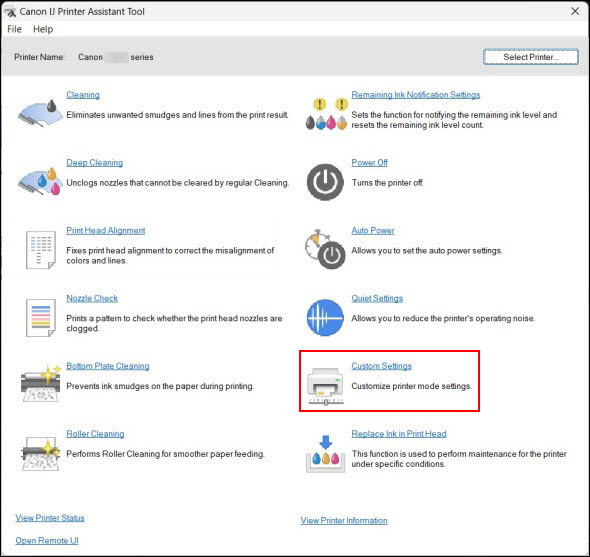
-
Select Align Heads Manually.
-
Select OK, then select OK when the confirmation message appears.
-
Select Print Head Alignment.
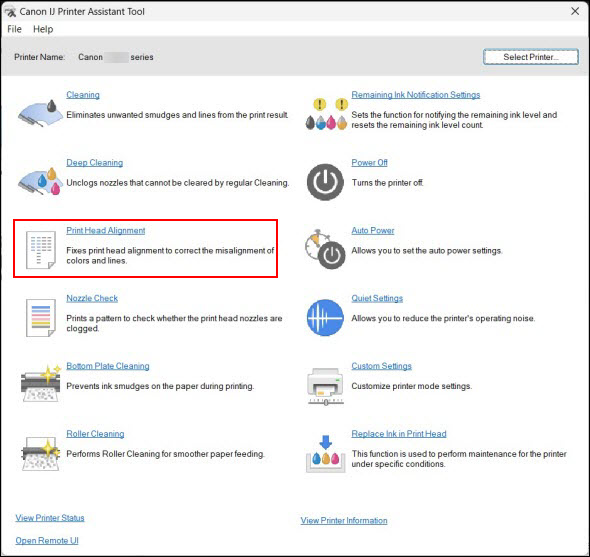
The Print Head Alignment dialog box opens.
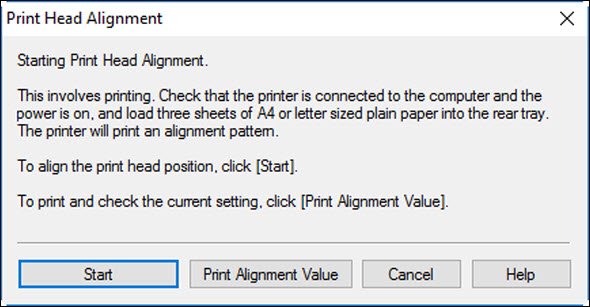
-
Load three sheets of A4 size or Letter size plain paper into the rear tray.
-
Make sure that the printer is on and click Start.
Follow the instructions in the message.
-
In each entry field, enter the number of the pattern with the least prominent streaks or stripes from among the printed patterns.
You can also enter numbers into the entry fields automatically by clicking relevant pattern in the preview.
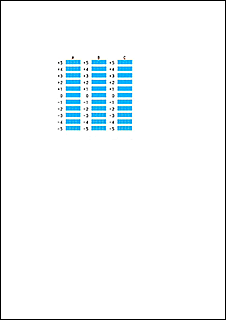
After completing the entries, click OK.
 If the patterns are not uniform, select the pattern with the least prominent vertical streaks.
If the patterns are not uniform, select the pattern with the least prominent vertical streaks.

(A) Less prominent vertical streaks
(B) More prominent vertical streaks
-
Confirm the displayed message and click OK
The second pattern is printed.
-
In each entry field, enter the number of the pattern with the least prominent streaks from among the printed patterns.
You can also enter numbers into the entry fields automatically by clicking relevant pattern in the preview.
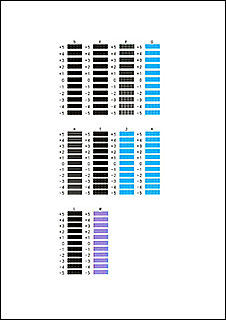
After completing the entries, click OK.
 If the patterns are not uniform, select the pattern with the least prominent vertical streaks.
If the patterns are not uniform, select the pattern with the least prominent vertical streaks.

(A) Less prominent vertical streaks
(B) More prominent vertical streaks
 If the patterns are not uniform, select the pattern with the least prominent horizontal stripes.
If the patterns are not uniform, select the pattern with the least prominent horizontal stripes.

(A) Less prominent horizontal stripes
(B) More prominent horizontal stripes
-
Check message content, and click OK.
The print head adjustment patterns on the third sheet are printed.
-
In each entry field, enter the number of the pattern with the least prominent stripes from among the printed patterns.
You can also enter numbers into the entry fields automatically by clicking relevant pattern in the preview.
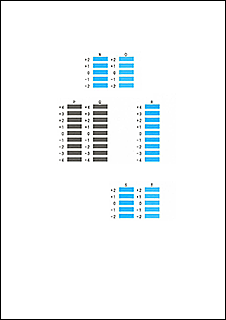
After completing the entries, click OK.
 If the patterns are not uniform, select the pattern with the least prominent horizontal stripes.
If the patterns are not uniform, select the pattern with the least prominent horizontal stripes.

(A) Less prominent horizontal stripes
(B) More prominent horizontal stripes
-
Click OK.
The adjustment of the head position is complete.
 In the Print Head Alignment dialog box, click Print Alignment Value to print the current settings so that you can check the settings.
In the Print Head Alignment dialog box, click Print Alignment Value to print the current settings so that you can check the settings.
If your product issue was not resolved after following the steps above, or if you require additional help, please create or log in to your Canon Account to see your technical support options.
Or if you still need help, visit our Canon Community by clicking the button below to get answers:
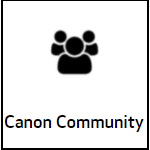
____________________________________________________________________________________________